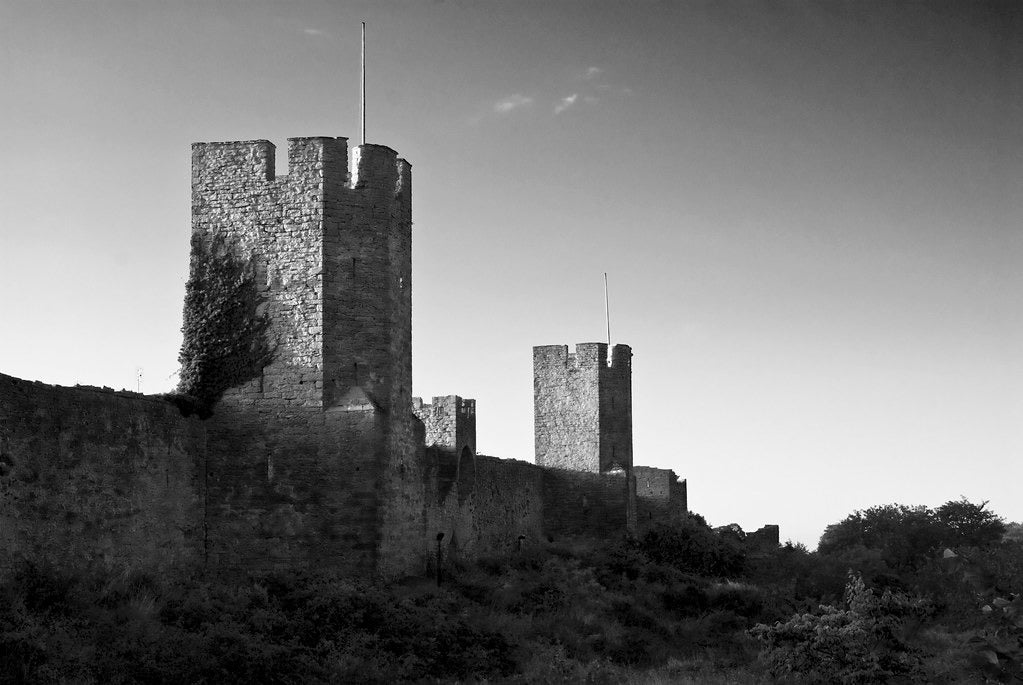
Borgund Stave Church: Norway's Best-Preserved Stave Church
Imagine a structure so resilient, so ingeniously crafted, that it has weathered nearly a millennium of storms, wars, and changing faiths. The Borgund Stave Church is such a marvel—a wooden wonder that has stood sentinel over Norway's Lærdal valley since the 12th century. Its weathered timbers and intricate carvings beckon us to unravel the mysteries of medieval Norse Christianity and architectural brilliance.
The Origins of Borgund Stave Church
Historical Context
During the 12th century, when Norway was a patchwork of fiefdoms and the echoes of pagan drums still reverberated through the valleys, Christianity was taking root in the Norse soul. It was in this crucible of cultural transformation that the Borgund Stave Church was born, around the year 1180. But why here? Why now?
The answer lies in the very landscape that cradles the church. Lærdal, with its strategic position along ancient trade routes, was a crossroads of commerce and ideas. As merchants and missionaries traversed these paths, they brought with them not just goods, but a new faith that would reshape the spiritual topography of the North.
Architectural Significance
The Borgund Stave Church isn't merely old; it's a revolutionary relic of architectural evolution. Its design represents a perfect marriage between Norse woodworking traditions and Christian symbolism. The stave construction technique, which gives the church its name, was an ingenious solution to the challenges posed by Norway's harsh climate.
But what makes Borgund truly exceptional? It's not just its age, though being one of the best-preserved stave churches certainly adds to its allure. No, it's the purity of its form. Unlike many of its counterparts, Borgund has remained largely unaltered since its construction, offering us a pristine glimpse into medieval craftsmanship.
Structural Marvels of Borgund Stave Church

Exterior Features
As you approach Borgund, the first thing that strikes you is its silhouette—a cascade of sharply pitched roofs that seem to defy the laws of physics. This isn't just aesthetic whimsy; it's practical engineering at its finest. But let's delve deeper into the details that make Borgund a masterpiece of medieval architecture.
Dragon Heads and Carved Portals
Perched atop the gables, snarling dragon heads stand guard against evil spirits, their wooden fangs as sharp today as they were centuries ago. These aren't mere decorations; they're a bridge between the old ways and the new, a nod to Norse mythology in a Christian context. And what of the portals? Ah, there's a story carved into every inch of them.

The western portal, the main entrance, is a symphony of intricate designs. Vines intertwine with beasts, creating a tapestry of symbolism that would have spoken volumes to medieval worshippers. Each curve and creature tells a tale—of sin and salvation, of the wild world tamed by faith.
Tiered Roof and Stave Construction
The roof of Borgund is a marvel in itself, a series of ever-diminishing tiers that create an illusion of impossible height. This design isn't just for show; it's a clever way to shed snow and rain, protecting the wooden structure beneath. But how does it all stand up?
The secret lies in the staves—massive wooden posts that form the skeleton of the church. These aren't just support beams; they're the very essence of the building's strength. Interlocked with horizontal ties and buttressed by external supports, the staves create a framework that has withstood the test of time with remarkable resilience.
Interior Wonders
Step inside Borgund, and you enter a realm of shadows and whispers. The air is thick with the scent of ancient timber and the echoes of countless prayers. But what secrets does this dim interior hold?

Drawing of Borgund stave church by G. A. Bull
Runic Inscriptions
Look closely at the walls, and you'll find messages from the past etched into the very fabric of the church. Runic inscriptions, some as old as the building itself, offer tantalizing glimpses into the minds of those who worshipped here centuries ago. Some are prayers, others graffiti—proof that human nature hasn't changed all that much in 800 years.
"Þórir carved these runes on the eve of Olaus-mass, when he travelled past here. The norns did both good and evil, great toil … they created for me."
These runes aren't just historical curiosities; they're a direct link to the people who built and used this church. Each carved character is a voice from the past, speaking directly to us across the centuries. What tales would they tell if we could understand them all?
Medieval Artifacts
Borgund isn't just a shell; it's a treasure trove of medieval artifacts. The baptismal font, hewn from stone and adorned with intricate carvings, has witnessed the christening of countless souls. The pulpit, though younger than the church itself, stands as a testament to the evolving styles of religious ornamentation.
But perhaps most intriguing are the remnants of pre-Reformation Catholicism—traces of saints' images, barely visible beneath layers of Protestant whitewash. These ghostly figures remind us that Borgund has seen not just the passage of years, but the tides of religious reform that swept through Europe.
Preservation and Restoration Efforts

Lion on arch decoration from Borgund Stave Church / Photo: Nina Aldin Thune
Challenges in Maintaining a Wooden Structure
Wood, for all its beauty and strength, is vulnerable to the ravages of time and nature. How, then, has Borgund survived for so long? The answer lies in a combination of clever design and constant vigilance.
The church's elevated foundation, which lifts the entire structure off the damp ground, is a stroke of genius. This simple feature has protected Borgund from the rot that has claimed many of its contemporaries. But it's not just about keeping the wood dry; it's about maintaining a delicate balance between preservation and authenticity.
Modern Conservation Techniques
Today, Borgund benefits from cutting-edge conservation techniques that would have seemed like magic to its original builders. Climate control systems monitor temperature and humidity, while specially developed preservatives protect the wood from decay and insect damage.
But perhaps the most crucial aspect of Borgund's preservation is the human element. A dedicated team of conservators and craftspeople work tirelessly to maintain the church, using traditional techniques alongside modern technology. Their goal? To ensure that Borgund stands for another 800 years, and beyond.
Borgund Stave Church in Norwegian Culture

Influence on Art and Literature
Borgund isn't just a building; it's a muse. Its distinctive silhouette has inspired countless artists and writers, becoming a symbol of Norway's rich cultural heritage. In paintings, it looms like a dark fairy tale castle; in literature, it serves as a backdrop for stories of faith, perseverance, and the enduring spirit of the Norwegian people.
But Borgund's influence extends beyond the realm of high art. Its image graces postcards and tourist brochures, a shorthand for the romance and mystery of medieval Norway. In a way, Borgund has become more than itself—it's an icon, a representation of an entire era.
Tourism and Cultural Heritage
In recent years, Borgund has taken on a new role as a major tourist attraction. Visitors from around the world flock to this remote corner of Norway, drawn by the promise of touching history with their own hands. But this popularity brings its own challenges. How do we balance the desire to share this marvel with the world against the need to protect it?
The answer lies in thoughtful management. A modern visitor center provides context and education, allowing tourists to engage with Borgund's history without putting undue stress on the ancient structure itself. It's a delicate dance between accessibility and preservation, one that Borgund's caretakers perform with grace and skill.
The Future of Borgund Stave Church
As we stand in the shadow of Borgund, gazing up at its weather-beaten walls and soaring spires, it's natural to wonder: what does the future hold for this venerable structure? Will it continue to stand, a dark sentinel against the march of time, or will the pressures of climate change and modern life finally take their toll?
The truth is, Borgund's future is in our hands. With continued care, research, and respect, this remarkable piece of history can endure for generations to come. But it requires more than just preservation of wood and stone; it demands that we preserve the spirit of innovation and craftsmanship that brought Borgund into being.
In the end, Borgund Stave Church is more than just a building. It's a bridge between past and present, a reminder of the ingenuity and faith of our ancestors, and a challenge to our own creativity and devotion. As long as it stands, it will continue to inspire, to teach, and to connect us with a world long past but never truly gone.
Conclusion
The Borgund Stave Church stands as a testament to the enduring power of human creativity and spiritual devotion. Its weathered timbers and snarling dragon heads have witnessed the ebb and flow of centuries, surviving wars, reformations, and the relentless march of progress. As we leave this ancient wonder, we carry with us not just memories of intricate carvings and soaring roofs, but a deeper connection to the threads of history that bind us all.
In an age of glass and steel, Borgund reminds us of the beauty and strength to be found in tradition, in the careful joining of wood and faith. It challenges us to look beyond the surface, to see the stories etched in every beam and carved into every portal. And perhaps, in the quiet shadows of its nave, we might find a moment of the same peace and wonder that has drawn pilgrims to this spot for nearly a millennium.
As Borgund faces the future, it does so not as a relic, but as a living part of Norway's cultural tapestry. It stands ready to inspire new generations, to weather whatever storms may come, and to continue its silent vigil over the Lærdal valley. In its persistence, we find hope; in its beauty, inspiration; and in its history, a reminder of the incredible journey that has brought us to where we are today.
FAQs
- How old is the Borgund Stave Church?
The Borgund Stave Church was built around 1180, making it approximately 840 years old as of 2024.
- What makes stave churches unique?
Stave churches are characterized by their post and lintel construction, using vertical wooden posts (staves) as the main support. They also feature elaborate wood carvings and a distinctive multi-tiered roof design.
- Are services still held in the Borgund Stave Church?
Regular services are no longer held in the Borgund Stave Church to preserve its structure. However, special occasions and ceremonies may still take place there.
- How many stave churches are left in Norway?
Currently, there are 28 standing stave churches in Norway, out of an estimated 1,000 to 2,000 that were built during the Middle Ages.
- Can visitors go inside the Borgund Stave Church?
Yes, visitors can enter the church as part of guided tours. However, access may be limited to protect the structure, and there's a modern visitor center nearby for more in-depth exploration.
References
Anker, L. (2005). The Norwegian Stave Churches. ARFO.
Hauglid, R. (1970). Norwegian Stave Churches. Dreyer.
Bugge, G., & Norberg-Schulz, C. (1969). Stav og laft i Norge. Byggekunst.
Dietrichson, L. (1892). De Norske Stavkirker. Kristiania.
Hohler, E.B. (1999). Norwegian Stave Church Sculpture. Scandinavian University Press.
"borgund stavkirke (stave church built between 1180 and 1250 AD)" by nicolas.boullosa is licensed under CC BY 2.0.
"Borgund stave church" by Herman Beun is licensed under CC BY-NC-ND 2.0.
"Borgund stave church" by bobwitlox is licensed under CC BY-NC-ND 2.0.
"Borgund Stave Church" by Roman Königshofer | rawmeyn is licensed under CC BY-ND 2.0.

